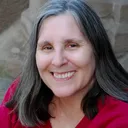Stay in the Loop
BSR publishes on a weekly schedule, with an email newsletter every Wednesday and Thursday morning. There’s no paywall, and subscribing is always free.
Looking history in the eye
Richard Avedon's Family Affairs at the NMAJH

Richard Avedon was a photographer in the Merchant Marine during World War II, shooting thousands of ID photos, but he first gained a professional reputation as a fashion photographer. He was known for his lively, out-of-the-studio shoots, which permanently changed the way high fashion was presented. He became the lead photographer for Harper’s Bazaar, a role glamorized/satirized in the Fred Astaire/Audrey Hepburn musical Funny Face (1957), for which he not only inspired Astaire’s character but also designed the opening credits and served as a consultant. As it turned out, however, he returned to the studio by the end of the decade, even for his fashion work, preferring to focus on and control the presentation of his subjects.
Simultaneous with his fashion work (which he continued until his death in 2004), he pursued more “serious” work, shooting portraits of the famous (Pablo Picasso, Marian Anderson) and documenting unnamed civil rights workers and patients in mental institutions. These two streams — portraiture and sociopolitical commentary expressing Avedon’s liberal politics — came together in the '70s, when he began photographing both groups of people and series of portraits, all of them placed against stark white backgrounds. Some of Avedon’s '70s work is on view in the NAMJH show, entitled "Family Affairs."
Art and politics
The show opens with some of his group portraits: The Chicago Eight, Andy Warhol and the denizens of the Factory, the Mission Council, and poet Allen Ginsburg’s family, the last printed at larger-than-life size. The centerpiece, though, is the array of 69 portraits that Avedon shot for Rolling Stone in 1976 in a series originally published as "The Family."
the last printed at larger-than-life size. The centerpiece, though, is the array of 69 portraits that Avedon shot for Rolling Stone in 1976 in a series originally published as "The Family."
The photos, identically sized and framed and hung mostly in quartets, are shot in Avedon’s trademark style, which evokes his ID-photo roots. Individuals face the camera head-on against white backgrounds, mostly prop-free (though Katharine Graham holds a pair of glasses) and for the most part resolutely not “posing” (though Daniel Patrick Moynihan will not be contained). The contrast to Annie Leibovitz’s elaborately staged celebrity portraits couldn’t be any starker.
Some of Avedon’s subjects smile, some grimace; some look the camera in the eye, others slightly to one side. Some present themselves straight on, others have one shoulder forward or up; some are centered in the frame, some stand slightly to one side. The differences are tiny, but “My photographs don’t go below the surface,” Avedon said. “I have great faith in surfaces. A good one is full of clues.” The subtle differences in their presentations of self (as Erving Goffman called it) become intriguing and evocative.
The series was powerful in 1976 — I remember poring over it during the lead-up to the presidential election, the first in which I voted. In some ways it’s even more powerful today, with our additional knowledge of how things turned out. 
 Ford and Carter are there, of course — so are Reagan and Bush Sr., the latter as head of the CIA. (Clinton was off in Arkansas winning his first election, as attorney general, at the time; he’d become governor two years later — who’da thunk he’d be successfully running for re-election 20 years later?) Jerry Brown and Ralph Nader are both there, looking awfully damned young. Mark Felt is there, almost 30 years before he was identified as the Deep Throat of Watergate. [The full list of participants can be found here.]
Ford and Carter are there, of course — so are Reagan and Bush Sr., the latter as head of the CIA. (Clinton was off in Arkansas winning his first election, as attorney general, at the time; he’d become governor two years later — who’da thunk he’d be successfully running for re-election 20 years later?) Jerry Brown and Ralph Nader are both there, looking awfully damned young. Mark Felt is there, almost 30 years before he was identified as the Deep Throat of Watergate. [The full list of participants can be found here.]
The personal is political
The individual biographies that unfolded over the four decades that followed are one part of the experience of looking at the photos today; the social changes over those decades are another. The Family is overwhelmingly white, despite the presence of Cesar Chavez, Andrew Young, and A. Philip Randolph. Two of these men of color, of course, got their starts as labor leaders, and organized labor is also well represented: George Meany, Leonard Woodcock, Frank Fitzsimmons. How many national labor leaders can you name today?
The men at least were included for their own efforts — three of the seven women pictured (Rose Mary Woods, whose former boss, Richard Nixon, declined to be photographed, Rose Kennedy, and Lady Bird Johnson) gained their power, such as it was, as only in connection with men. Katharine Graham, of course, inherited her position as publisher of the Washington Post after her husband’s suicide, but she wielded significant power on her own terms. Bella Abzug, Shirley Chisholm, and Barbara Jordan round out the list of women.
Who would appear in such an array today? And who could photograph them so powerfully and evocatively?
What, When, Where
Richard Avedon: Family Affairs. From the Collection of the Israel Museum, Jerusalem. Only U.S. show. Through August 2, 2015 at the National Museum of American Jewish History, 101 South Independence Mall East, Philadelphia. 215-923-3811 or www.nmajh.org.
Sign up for our newsletter
All of the week's new articles, all in one place. Sign up for the free weekly BSR newsletters, and don't miss a conversation.
 Judy Weightman
Judy Weightman